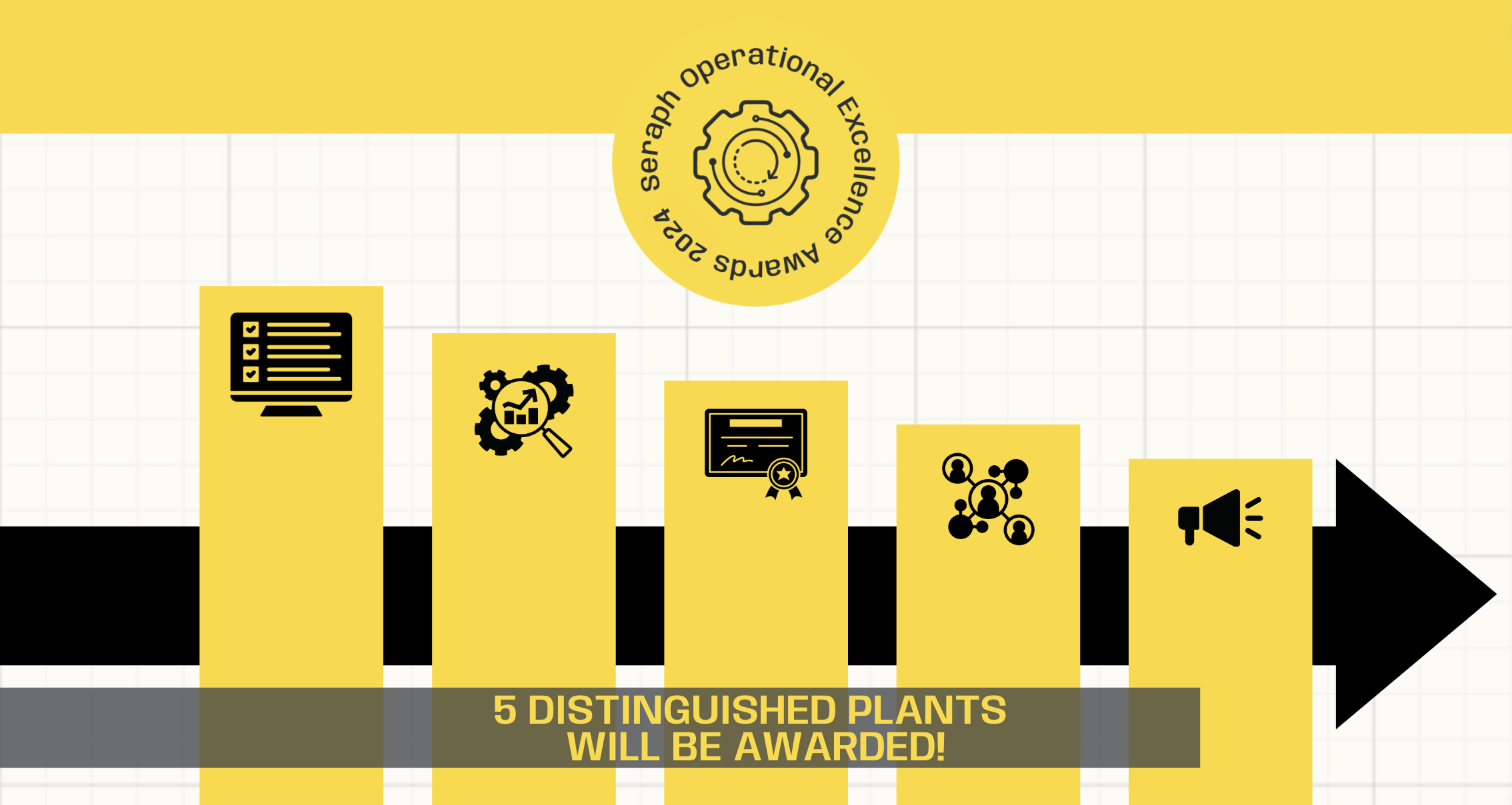Like the intricate components within your manufacturing plant that drive its functionality, the Seraph Operational Excellence Awards process was created to assess and understand key information across your many facts of your automotive plant operations. It was designed to assess how well key departments within your plant operations are performing, where you are the strongest and how well you are performing against your peers.
The Operational Excellence Awards process provides an opportunity for your leadership and teams to work collaboratively towards a common goal, and to highlight strengths across the manufacturing floor. The value it adds is noticed across different areas of your plant.
“Being involved in the Operational Excellence Awards, was an extremely valuable endeavor, and I would highly recommend applying, regardless of winning. It brought our teams together in a meaningful way.”
Ramesh Gaddam, President and CEO Rayconnect.
Phase One involves taking an online assessment, which facilitates questions across four (4) key departments of your manufacturing plant – operations, quality, logistics, and human resources.
The online assessment will require roughly 90 minutes (about 1 and a half hours) to complete. At the conclusion of Phase One, each participating company will receive a summary report showing how well you performed against your peers in each category, providing a comprehensive view of your market position.
Phase Two identifies the top eight (8) scoring companies from Phase One, and provides each company with a complimentary on-site assessment from the Seraph team. This assessment is a streamlined version of the manufacturing audit process that Seraph uses to evaluate manufacturing plants across the globe.
Our assessment is a proven process that will highlight how well your plant is performing in each of the designated areas, operations, quality, logistics, and human resources. Last year’s recipients of the in-plant assessment felt that this was an invaluable tool. At the conclusion of this phase, each participating company will receive a summary assessment report, that highlights key areas of the audit. The entire process enables you to identify areas within your operations that require improvement while also acknowledging achievements that deserve recognition.
Phase Three serves as validation of your work through the discerning eyes of our Operational Excellence Awards judging panel, which is comprised of highly qualified industry experts with decades of automotive experience. Past year’s winners attested to the value of our judges, who possess profound expertise in automotive manufacturing. Receiving their stamp of approval signifies that they were achieving excellence within their plant operations.
During this phase, our judges will review findings from both Phase One and Phase Two to select all five (5) award winners:
- Operations Excellence Award
- Quality Excellence Award
- Logistics Excellence Award
- Human Resources Excellence Award
- Overall Best Supplier Excellence Award
Phase Four being chosen as a finalist for the Operational Excellence Awards offers a unique opportunity to celebrate your accomplishments with other industry professionals. It’s a chance to reconnect with old acquaintances and forge new connections, while publicly acknowledging your company’s excellence. This year’s awards ceremony will take place on June 6, 2024, at Chroma in Detroit, MI.
Besides operational value and insights, celebrating your accomplishments with your team enhances employee morale and fosters a sense of belonging and shared purpose. Winning the Operational Excellence Awards instills a sense of pride and achievement. After winning the award, last year’s winners returned to their plants and celebrated their win with their teams, hosting a lunch and acknowledging their teams’ accomplishments. It’s small the things like this that go a long way in uniting your team together.
Additionally, beyond internal communications, all winners will receive a comprehensive press kit. This facilitates the seamless announcement of their achievements through external channels.
Applications are being accepted through March 8, 2024.
Applying requires only a small investment of time.
Talk to your leadership team and act today. Don’t miss out!
Who Should Apply:
Automotive Tier 1 and 2 suppliers, including automotive aftermarket manufactures, that have a plant(s) operation in North America. Each plant applying is a single application, so multiple applications from the same organization can apply.
It’s free to apply …. with tremendous upside in being selected for an award.






